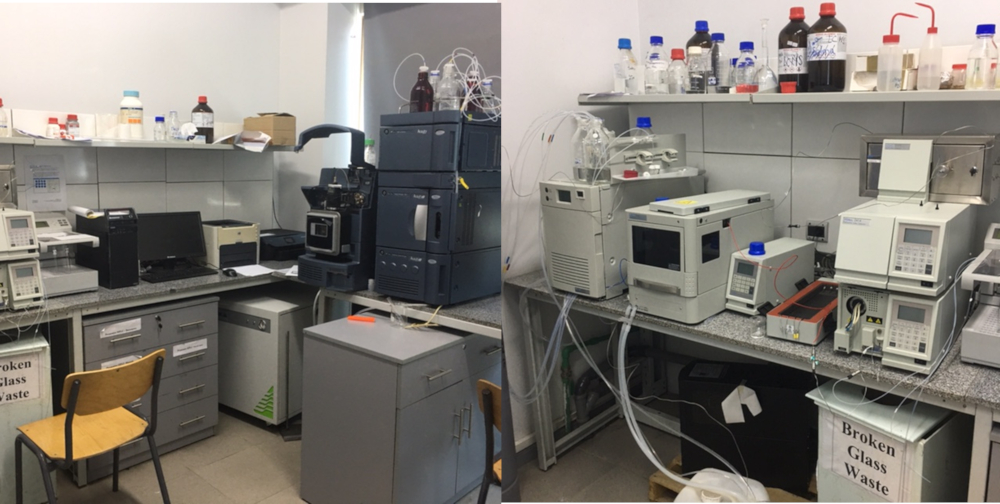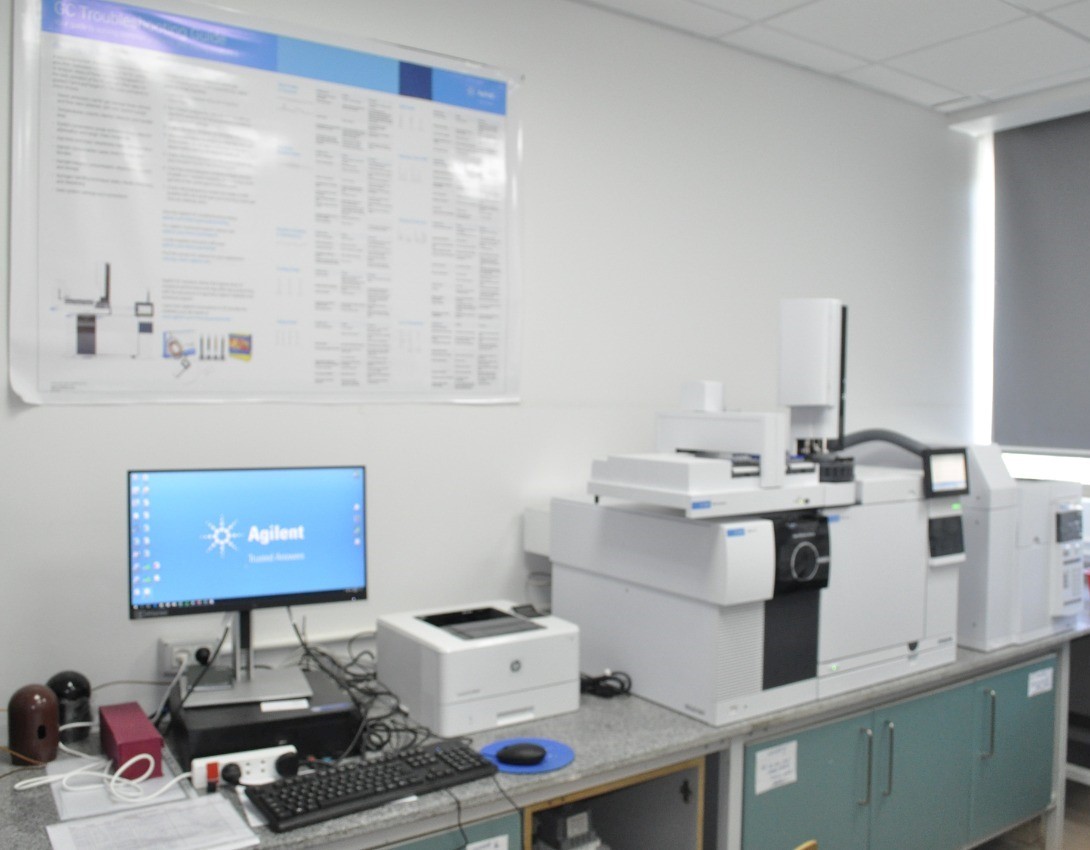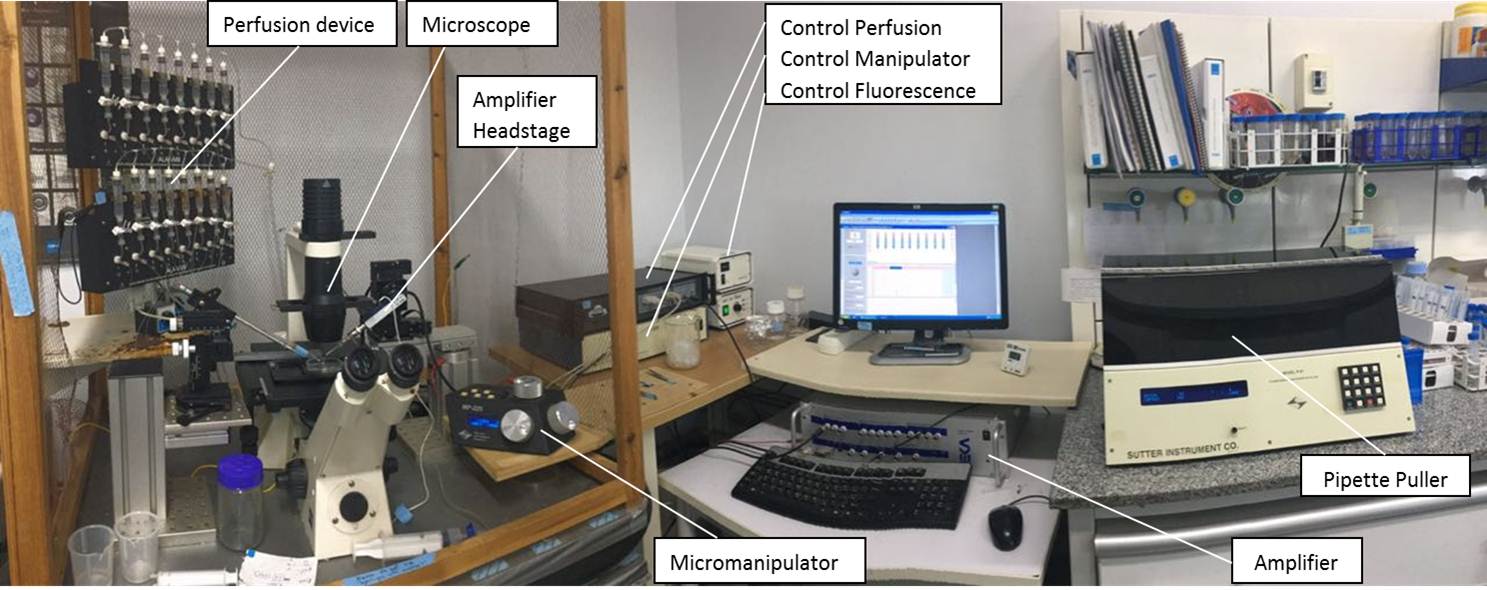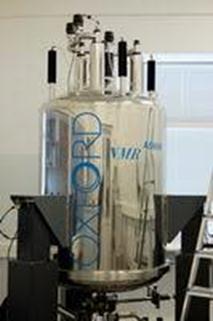As defined in the requirements and objectives of the programs of Pharmacy and Biotechnology, undergraduate students are provided with modern facilities for their studies, including 20 lecture halls and 35 classrooms, in addition to 23 students laboratories, 15 research laboratories, an animal house and two stores for chemicals and glassware. Along with all the fundamental instruments required for undergraduate level of Pharmacy and Biotechnology education, numerous state-of-the-art research instruments are available, enabling cutting edge research.
A selection of the facilities provided by the faculty of Pharmacy and Biotechnology:
Advanced Pharmaceutical Analysis (Chromatography Laboratory):

Ultraperformance liquid chromatography-tandem mass spectrometry (UPLC-MS-MS): Compounds in complex mixtures, e.g. from biological extracts or biological fluids, can be separated by ultra-performance liquid chromatography and identified by their characteristic mass spectrum. This allows the rapid identification and quantification of the active principle from extracts with interesting biomedical activity or biomarkers for certain diseases.

 Headspace Gas Chromatography-tandem mass spectrometry (HS-GC-MSMS):
Headspace Gas Chromatography-tandem mass spectrometry (HS-GC-MSMS):
Volatile compounds or compounds that can be volatilized after heating or derivatization in complex mixtures can be qualitatively and quantitatively determined with highest accuracy and sensitivity by gas chromatography with triple quadrupole tandem mass detection. Small metabolites can be profiled by targeted and untargeted metabolomics approaches using this instrument where identification is supported by NIST18 library and other open source libraries. The headspace accessory allows clean and green sampling for samples that have volatile analytes in the sample vial headspace.
Patch-Clamp Unit:
 Patch-Clamp Electrophysiology Setup: Ion channel proteins regulate communication between nerve cells. They regulate, movement, sensory signals, pain signaling, and all other neuronal functions. The function and signaling of ion channels can be measured using patch-clamp electrophysiology. The effect of defect mutations and of pharmaceuticals that inhibit or potentiate channel function can be assessed. Viruses also express ion channels that are essential for assembly and release of new virus particles. The GUC hosts the only setup for patch-clamp electrophysiology in the region, and a modification of the method to allow the study of viral ion channels has been developed. The technique is an important tool for the study of disease mechanisms and for the development of new pharmaceuticals, analgesics, and antiviral therapeutics.
Patch-Clamp Electrophysiology Setup: Ion channel proteins regulate communication between nerve cells. They regulate, movement, sensory signals, pain signaling, and all other neuronal functions. The function and signaling of ion channels can be measured using patch-clamp electrophysiology. The effect of defect mutations and of pharmaceuticals that inhibit or potentiate channel function can be assessed. Viruses also express ion channels that are essential for assembly and release of new virus particles. The GUC hosts the only setup for patch-clamp electrophysiology in the region, and a modification of the method to allow the study of viral ion channels has been developed. The technique is an important tool for the study of disease mechanisms and for the development of new pharmaceuticals, analgesics, and antiviral therapeutics.
Nuclear Magnetic Resonance (NMR):

Varian 400 MHz Nuclear Magnetic Resonance Spectrometer: Nuclear Magnetic Resonance (NMR) spectroscopy allows the identification of the chemical structure of substances, and their relevant functional groups and interactions. 400 MHz NMR spectrometers are the top line of currently available instruments and offer highly detailed information of conformation and structure-activity relations of pharmaceutically active compounds